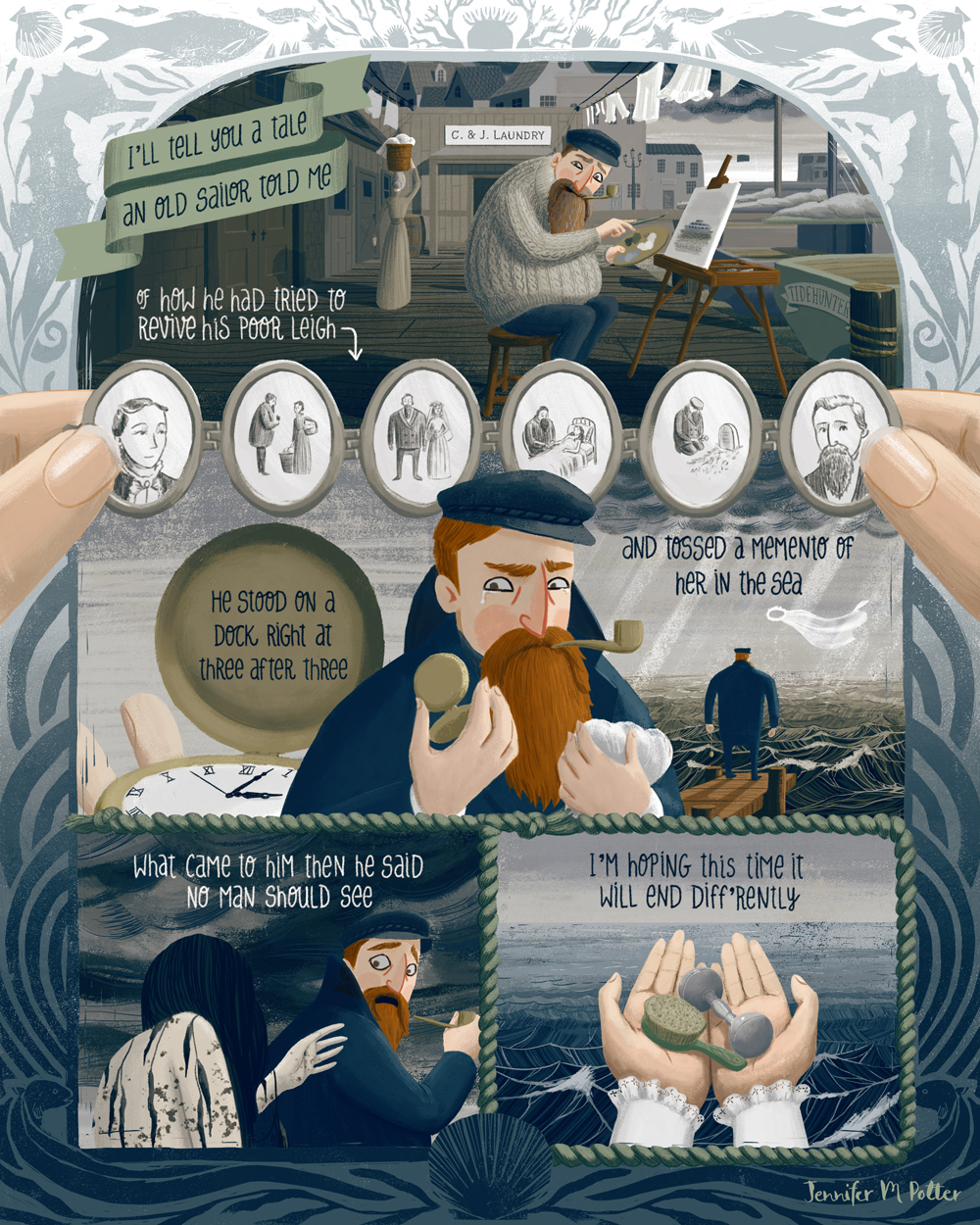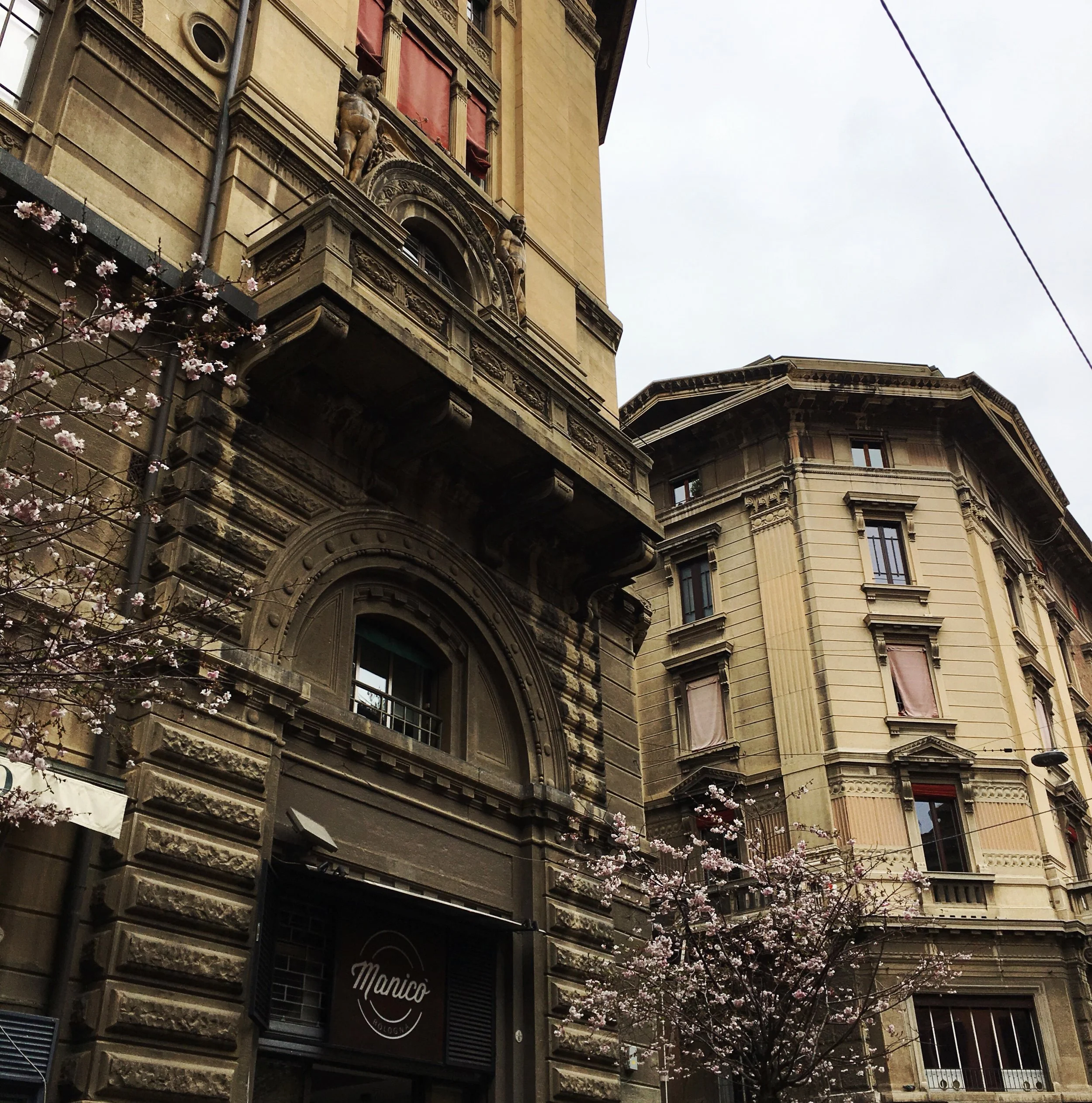These opinions are my own and are in no way representative of Lilla Rogers, Lilla Rogers Studio, or Make Art That Sells.
If you’re reading this, you probably know that I was one of the winners of the Lilla Rogers Studio 2018 Global Talent Search. My life has been an absolute whirlwind since then, but I thought I’d share my thoughts on the competition—what it was like to compete, and what it takes to win—while it’s still reasonably fresh in my mind.
If you haven’t participated in it before, it goes like this: Once you’ve registered, you’ll get access to the first assignment. If you make it through to the next round, you’ll get a second assignment, and if you make it through that, you’ll get the final assignment. Only Lilla knows what the assignments will be ahead of time, but rest assured they’ll be geared towards markets she wants to focus on. If you’re lucky, they’ll all be in your wheelhouse. If not, you can still challenge yourself. You might make it to the next round, but at the very least, you’ll learn something.
I’ll level with you. I didn’t enter the competition to win. In fact, I thought I had zero chance of winning. I did it for two reasons: one, I’d already paid for it with my classes, and two, my friend Rachael Schafer made it into the top 50 a few years before and got a couple of jobs because of it. I was in it to get my work in front of the judges. That’s it.
Was I selling myself short? I don’t think so. With over 1000 contestants, competition was super fierce, and all of the previous winners (and assignments) were very strong in surface design and home decor…not exactly my forte. But it’s always worth a try, right?
Assignment 1
Our first assignment was to do a gardening journal. I live in a tiny apartment with no yard. I didn’t even know that was a thing! We had to include anemones and staghorn fern, as well as some sort of text.
Here’s my submission:
My approach to this was to (try to) be a little clever. The truth is, with so many incredibly talented contestants, I knew there were going to be hundreds of seriously beautiful entries. I didn’t think I could compete with that. Not enough to stand out. So I did what I could do. I included a moderately humorous, but still accessible pun, and I added some foil to the lettering…because who doesn’t love a little foil on a book cover?

Why this round is hard:
You're competing against 1000+ people. You’ll likely be more experienced than a significant portion of them, but there will be a bunch who are more experienced than you. And it’s not about doing one good piece. If Lilla likes what you did for the assignment, she’s going to then look at your body of work. So you have to have several strong pieces, and be able to demonstrate that you can create marketable work regularly.
How to get an edge:
Start competing now, and I don’t just mean get your portfolio ready (but do that, too). This isn’t your typical art contest. It’s not just about art. I suspect a lot of people misunderstand that. It’s about building a career…a professional relationship that may last a lifetime. So naturally a big part of the competition is personality. You could be the best illustrator in the world, but if you don’t conduct yourself professionally, Lilla’s not going to give you the time of day. When she selects her top 50, she’s not just picking art she loves, she’s picking people she could see working with. At this point, she has no idea who will win GTS. She doesn’t even judge in round 2, so it’s important that she selects a pool of people, any one of whom she’d be happy to represent.
The best way to get in that pool is to get in front of Lilla. That’s certainly going to be easier if you take her live classes, but do you have to? I don’t think so. She’s accessible via social media. She’s on instagram a lot and goes Live on Facebook regularly. And she’s always paying attention. If you’re engaged and kind, and you contribute, that’s going to stand for a lot. If you mention her, if you comment on her posts, chances are she’ll start to recognize your name. And if you engage with the community, and build visible relationships with people she admires, even better. I feel comfortable saying that she’s not going to pass over a great artist that she’d love to rep, for an artist she’s less excited about but who took her classes. That said, there’s definitely something positive to take away when a person is serious enough about their career to invest in it.
Another thing you can do to give yourself an edge is get feedback from working illustrators. I can’t stress how important that is. You need people you can trust to share constructive feedback, even if you’re competing together. If you’re too competitive to give feedback, or if you’re too protective of you work to get feedback, then you’re probably doing yourself a disservice. You don’t have to do this on your own. It’s not cheating. When you work with a client you’ll be expected to work with feedback. It’s an important part of the process, and it makes you a better illustrator. And if you’re like me, it will pull you out of analysis paralysis from time to time. This is where I give Cassandra Fountaine a big shout out for being awesome at critique…and art in general.

Making it into the top 50 was a big relief. I’d done what I set out to do. It wasn’t until I saw the next assignment that I thought I could go further.
Assignment 2
The second assignment was a graphic novel page. Now THIS was in my wheelhouse. I love comics and graphic novels. There was a short point in my teens when I collected comics, and I took Comic Book Illustration in college. I even spent a year on a webcomic. The point is, I could do this in my sleep, and more importantly, most of the competition couldn’t. That is to say, I figured it was probably foreign territory for most.
Here’s my submission:
We had to use a collection of specific objects in this comic, and of course, text. The text could be anything, and it didn’t have to be an actual story, but I like storytelling, both verbal and visual, so I went all out and made a complete story with rhyme and a bit of a twist. It was fun, but I still lost sleep over it. Because at this point, even though I was no longer competing against 1000+ people, I was competing against 49 very strong artists, and that’s just as tough.

Why this round is hard:
This round is hard because there are multiple judges, and chances are, they don’t know you. They’re just looking for what they feel is successful art based on a set of criteria that Lilla gives them (and you). They may not even agree, so you have to generally appeal to everyone.
How to get an edge:
Your best bet is to be fairly well rounded, so hone your drawing skills and explore different markets. Chances are the judges will be from a variety of markets (like magazines, book publishers, product manufacturers and other art licensers/buyers), and they’ll be looking for different things like, composition, color palette, typography, storytelling, etc. The better you are at these things, the better you’ll do. And again, use a critique group. They’ll help you spot problems you may miss.
Beyond just generally being a very good illustrator, there’s one other way to get through round 2, and that’s with votes. Unfortunately your friends and family won’t cut it, so you’ll need to have a big network. The bigger the network, the more votes you can (probably) count on, so if you’re not working on building your following, get to it. It is a bit of a popularity contest, but it’s also worth noting that the person with the most instagram followers didn’t win the People’s Choice Award last year.

Even though I felt pretty good about my chances this round, I still lost sleep waiting for the results. Again it was a relief making it through, but the final round was the most intense of all.
The 2018 Global Talent Search, Round 3
In the final round we had to illustrate a spread from a children’s book. If you’ve ever taken the MATS Illustrating Children’s Books course, then you’d recognize the format. We were given three short passages and told to pick one and illustrate a spread and an (optional) character sheet.
Here are mine:
By this point of the competition, I was super anxious. I was competing with successful, experienced artists, each one completely capable of winning. What’s more, I was competing against friends., people that I’d been in class with and really respected. I wanted all of us to win. I knew Lilla had picked more than one winner in the past, and sincerely hoped she’d take us all.
I can’t tell you how glad I am that she did.

Why this round is hard:
At this point, it’s anybody’s game, and I think more than anything, what’s hard is realizing what you have to lose. I started to believe that winning representation was possible, and realizing how much more work I had ahead of me if I didn’t win, was super stressful.
How to get an edge:
You get to communicate with Lilla and her team directly at this point. It’s a chance to demonstrate that you’re professional and easy to work with, so be charming! You also get to work with Lilla as you would an art director, so ask for feedback, and take what she tells you to heart.

That’s about it. I definitely got a few more gray hairs out of it and maybe shaved a couple of weeks off my lifespan. It was wild. I worked non-stop. I also got VERY lucky. My passion is for storytelling, and all of the assignments were book-based. It could not have gone better. If it was any other year…if there were any other assignments…I might have not have made it past the first round.
In retrospect it’s pretty funny. People sometimes ask me how to get an agent, but of course I got mine the most absurd way possible. So I guess my advice is to just drive yourself bonkers for a few months and then everything should fall into place. ( ❛ᴗ❛)















































